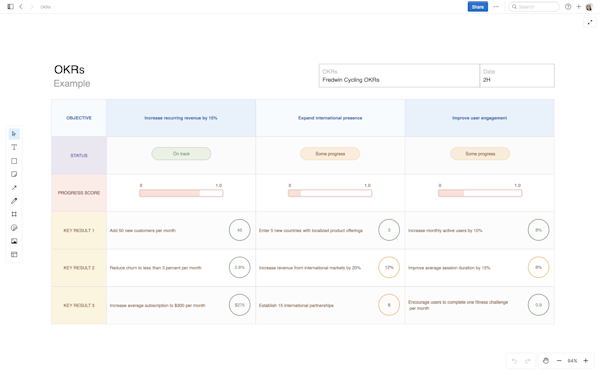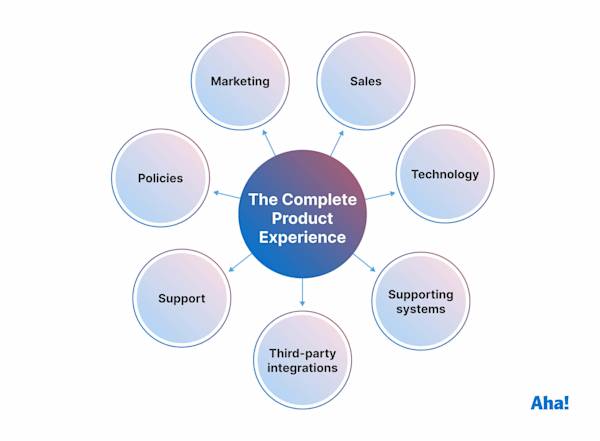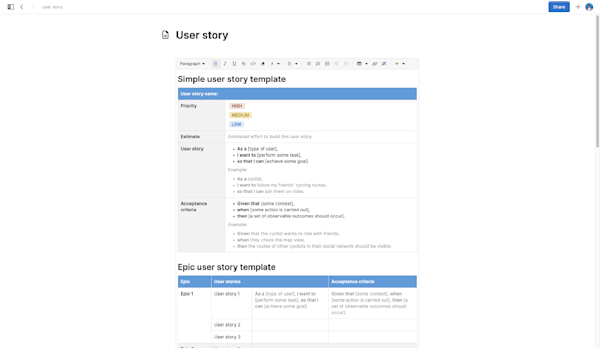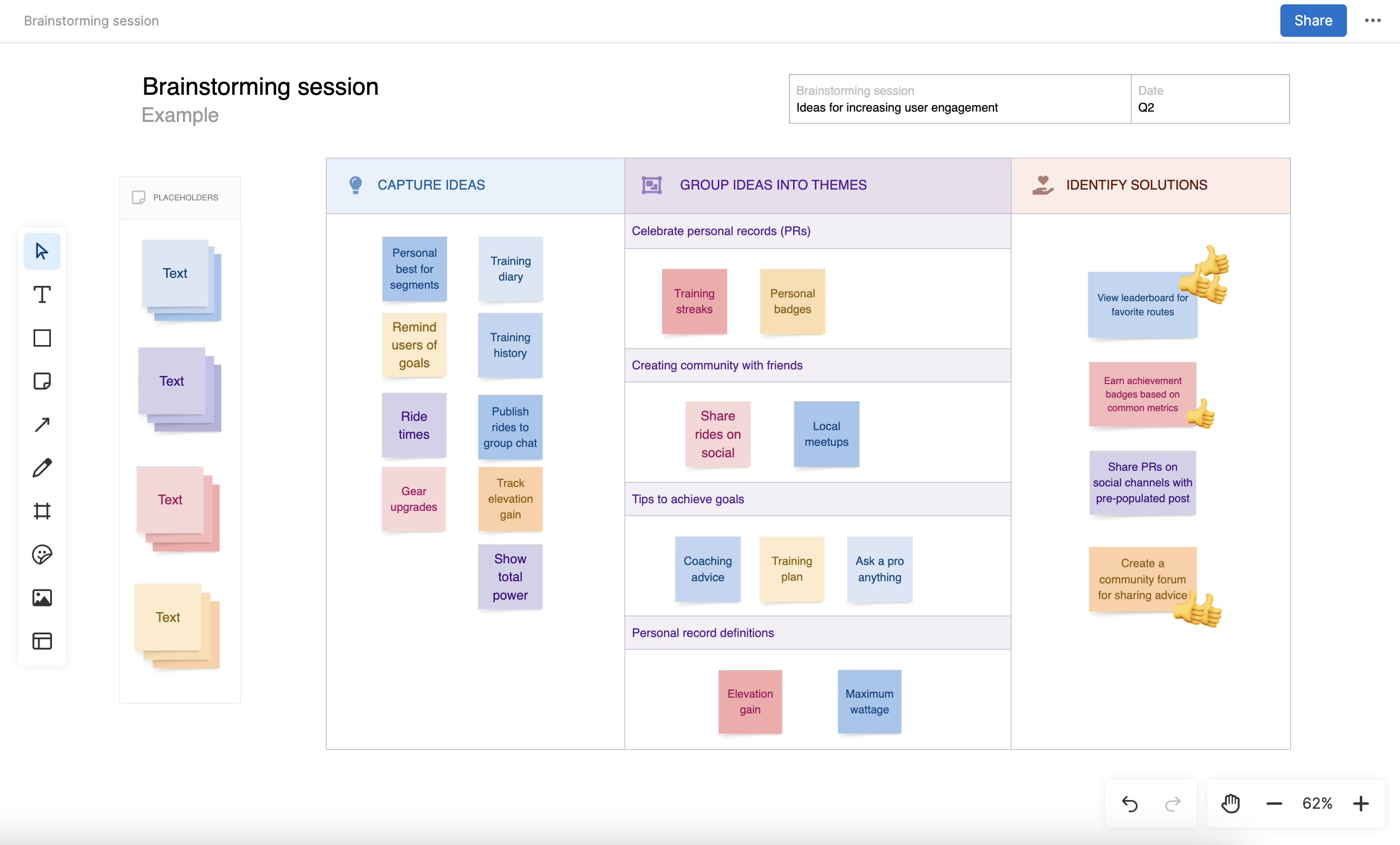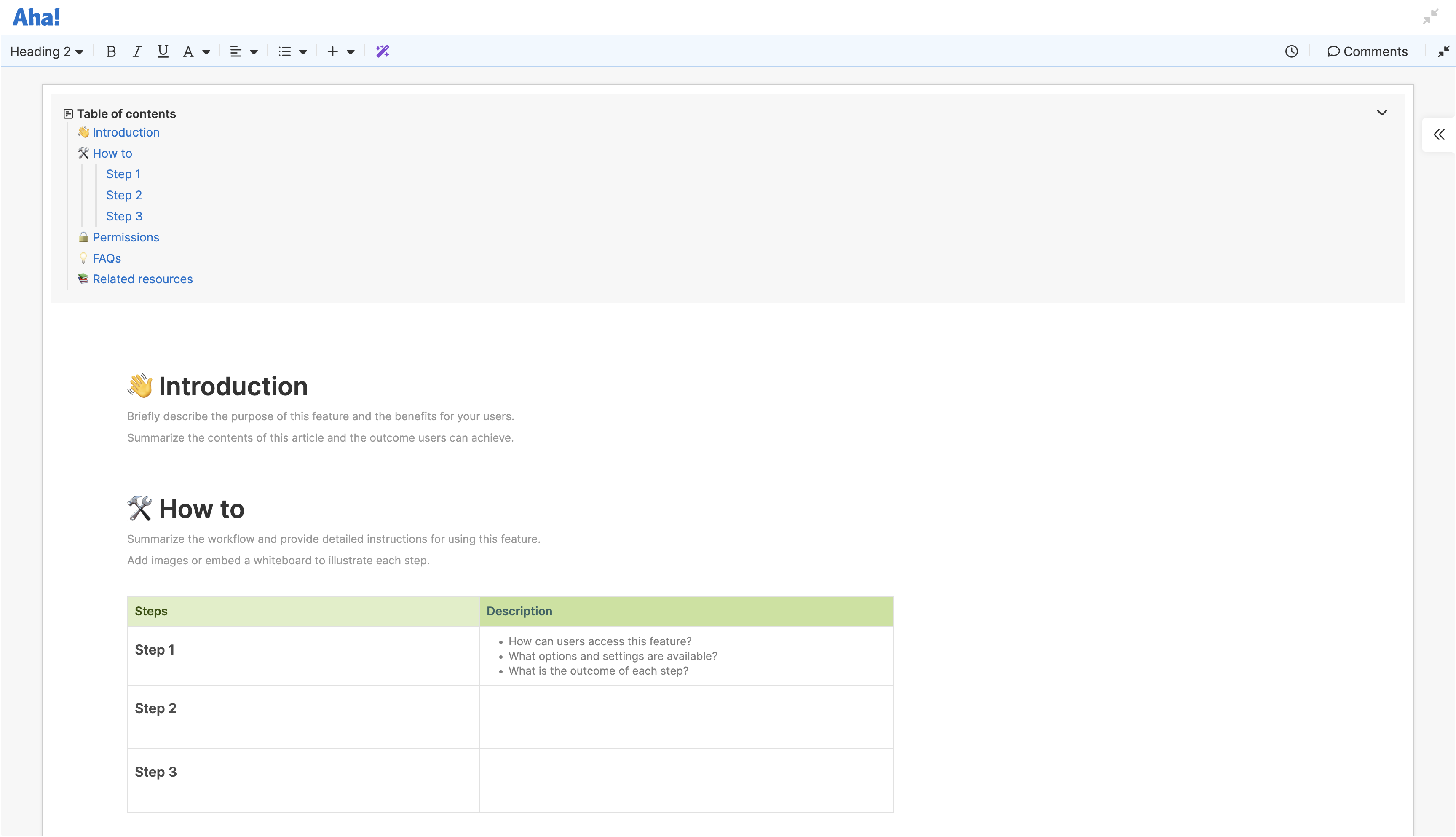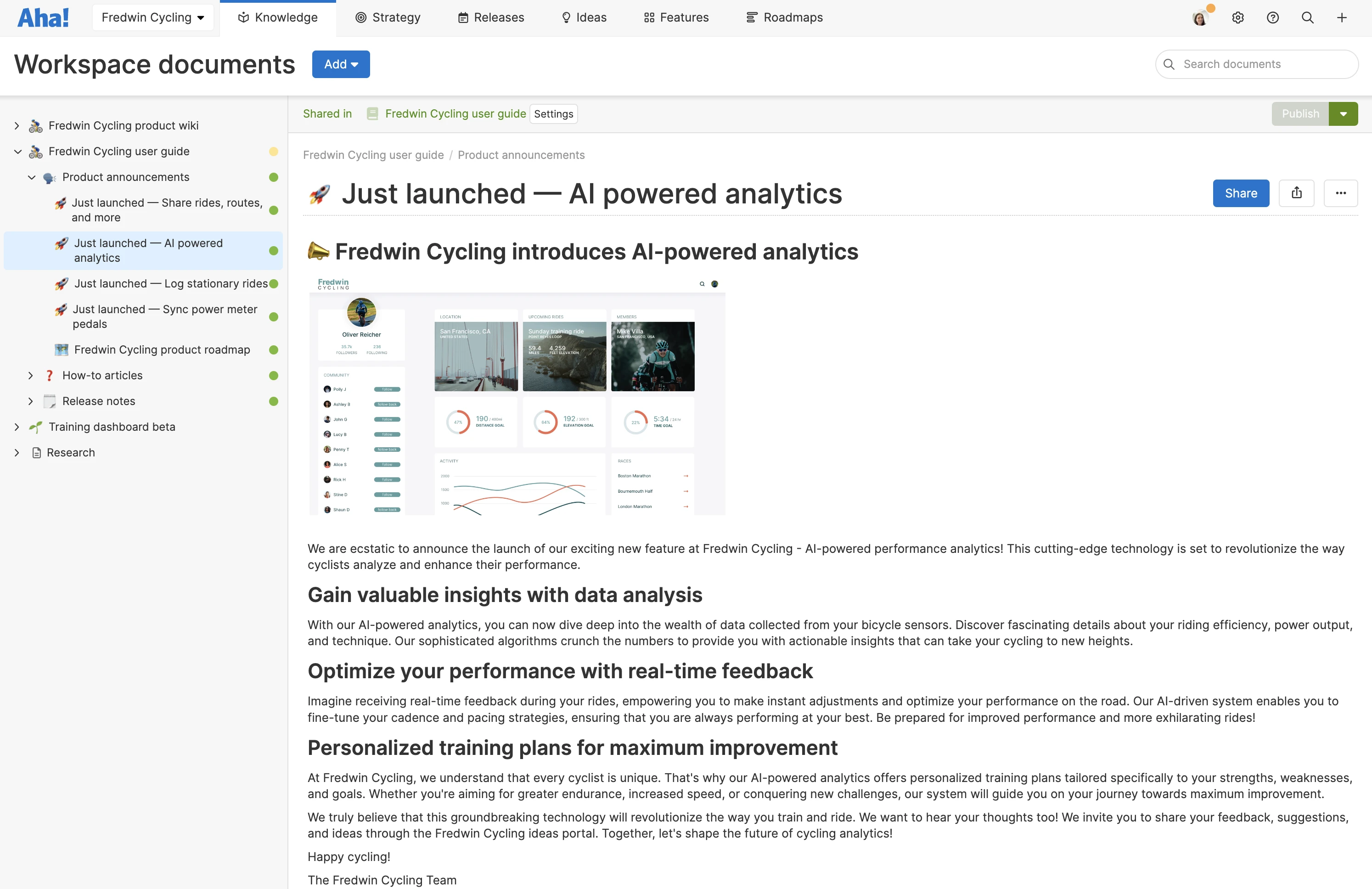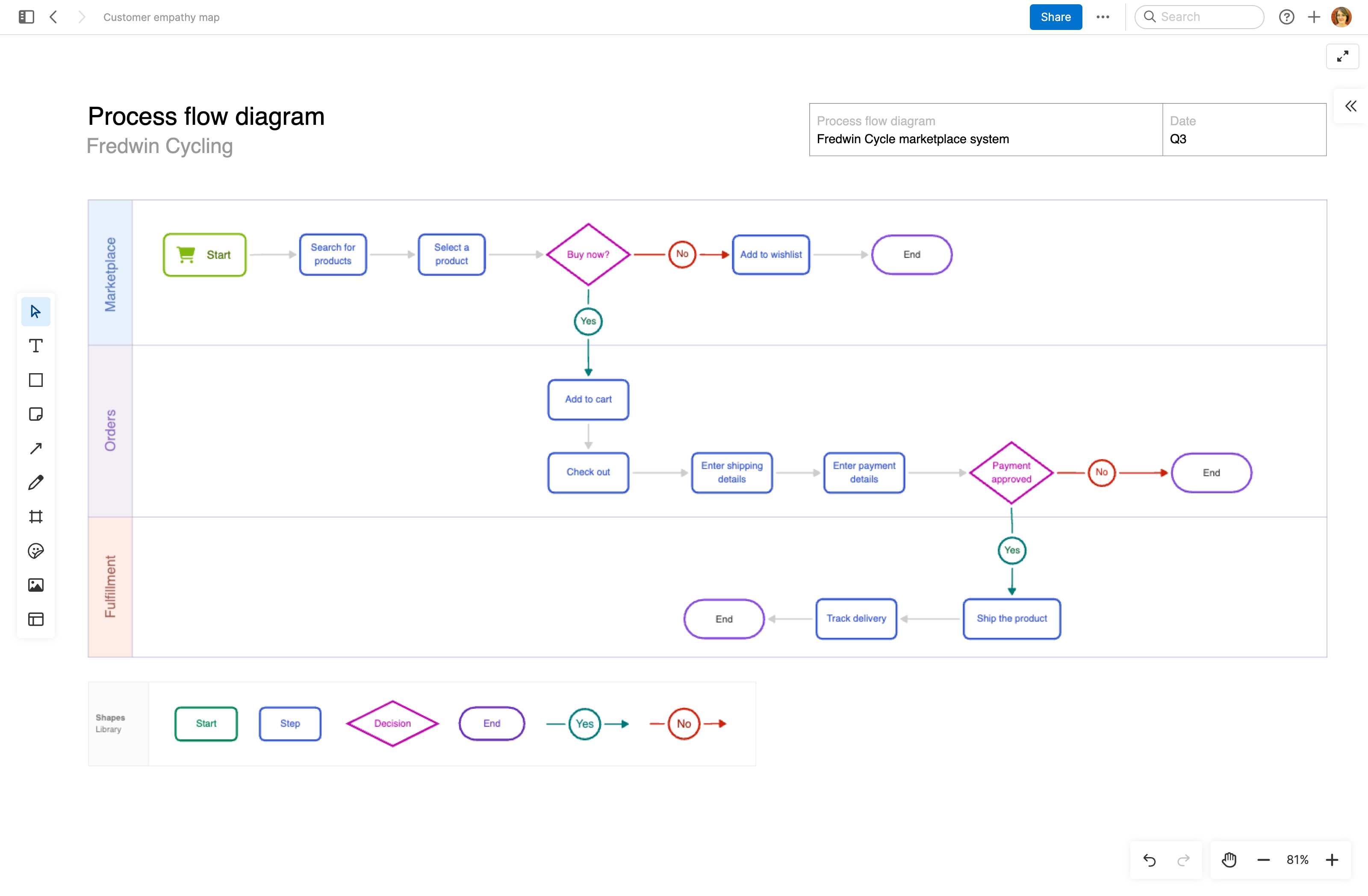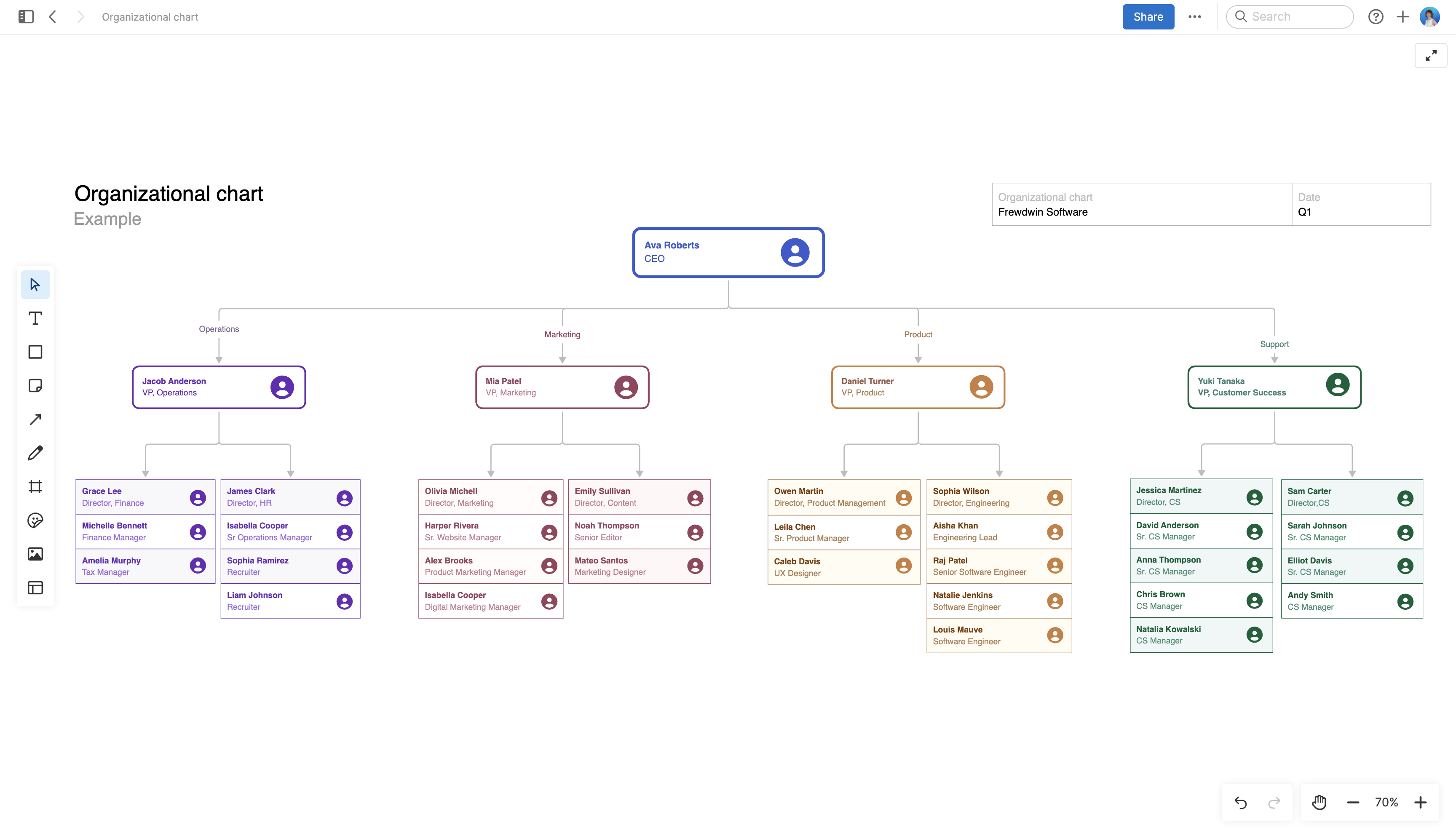Provide immediate clarity around the roles and reporting structure within your company using this organizational chart whiteboard template.
Creating a dynamic onboarding playbook in Aha! Knowledge ensures training is scalable and high quality without overburdening coworkers. To-dos and tasks are integrated within the software, making it easy for new hires to be productive daily and document their learnings.
We hope these examples help illustrate the power of knowledge base software for product teams. And we understand that building a knowledge base of any kind can feel challenging. So if a specific use case aligns with the needs of your organization, start there. Any progress made for the sake of your employees and customers is a valuable pursuit.
FAQs about Aha! Knowledge
What is Aha! Knowledge?
Aha! Knowledge is the best way to centralize all your product documents. Quickly set up internal self-serve product knowledge bases to bring together notes and diagrams. Capture information in the format that makes sense and streamline your document management process. Use AI to quickly draft high-quality content, and choose from more than 100 expertly crafted templates — or create your own — to capture information in a consistent way.
Who uses Aha! Knowledge?
Aha! Knowledge is part of our suite of product development software — built with product managers and product teams in mind. Customer success teams, content creators, and technical writers also find value in this product.
What is included in Aha! Knowledge?
Aha! Knowledge Essentials includes everything you need to set up a product knowledge base, such as unlimited documents, an AI assistant, 100+ templates, unlimited guest access, and whiteboard functionality. If you are looking to publish several product knowledge bases, control access, use custom branding, or enable single sign-on, Aha! Knowledge Advanced is your best bet.
